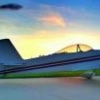https://www.msnbc.msn.com/id/22651166/
Pilot error cited in 2007 Blue Angel crash
'Real aggressive turn' appeared to cause disorientation
Jan. 14, 2008
PENSACOLA, Fla. - A Navy Blue Angels pilot killed in a crash in a residential area last year apparently had become disoriented after failing to properly tense his abdominal muscles to counter the gravitational forces of a high-speed turn, The Associated Press has learned.
A report obtained by The Associated Press blamed the April crash on an error by Lt. Cmdr. Kevin Davis, who died when his F/A 18 Hornet went down near a Marine Corps station in Beaufort, S.C. Davis was in his first season flying in formation with the Navy's elite aerial demonstration team.
"In his final turn to attempt to rendezvous with the other Blues, he put a very fast, high-G turn on the aircraft. A real aggressive turn," Capt. Jack Hanzlik, a Navy spokesman and former aviator, told the AP on Monday.
Davis' parents were watching the team perform.
An investigator reviewing flight data found that as the turn subjected Davis to six times the force of gravity, a temporary decrease in blood flow to his brain likely caused him to experience tunnel vision and become disoriented, the report found.
However, Davis worked to regain control of the plane, "and in the last few seconds he may have been aware of his low altitude and was attempting to save the aircraft," said the report by Marine Lt. Col. Javier J. Ball.
The AP obtained the report as the result of Freedom of Information Act request.
"Kevin had performed these maneuvers in training and in the fleet. He had done them in similar situations and he had a history of performing them well without any problems," Hanzlik said
The Pensacola-based Blue Angels fly without the G-suits that most fighter pilots wear to avoid blacking out during such maneuvers. The suits inflate and deflate air bladders around the lower body to force blood to the brain and heart.
However, the air bladders can cause a pilot to bump the control stick, so the Blue Angels instead learn to manage the forces by tensing their abdominal muscles.
The crash at Marine Corps Air Station Beaufort was the Blue Angels' first since 1999 and the 26th fatality in the team's 60-year history.
Because of the crash, the Navy has increased its exercise requirements for Blue Angels pilots with an additional focus on abdominal muscles. The team has also stepped up its requirements for centrifuge training tailored for Blue Angels pilots.
Eight people on the ground were injured and some homes were damaged when the plane crashed in a residential area about 35 miles northwest of Hilton Head Island, S.C.
The pilot's family said through the Navy that they did not want to comment on the report.



